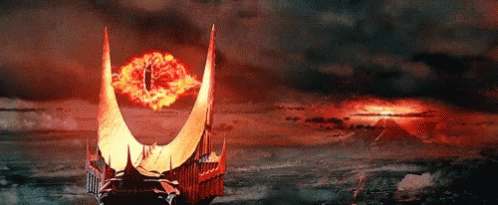

As a Maia he was once, of course, able to take essentially any form he wished (and see Of Beren and Luthien for a description of him doing so, as well as his appearances among the elves as Annatar) but he lost much of that ability at the end of the Second Age. So it's quite clear that Sauron's physical form is that of a tall man.

Most telling of all, a description of his actual form. The form that he took was that of a man of more than human stature, but not gigantic. Sauron should be thought of as very terrible. the year 1000 of the Third Age, when the shadow of Sauron began first to grow again to new shape.Ĭonfirms that there is a physical form but no indication of what it is. He has only four (fingers) on the Black Hand, but they are enough. There is also which does not quote PJ but does express a similar assessment. Going from that single quote, we could suppose that PJ genuinely thought that the Eye of Sauron was Sauron's physical form. I treated the ring less as an object or prop and more as a potent character. We came to the realization, which is obvious, really, that the ring is the villain of the film.
#LORD OF RINGS EYE OF SAURON MOVIE#
The betrayer–wizard Saruman is a useful secondary villain, but he stays in his dark tower in this movie and doesn't leave. And you know it's not going to be interesting to see, oh, Arnold Schwarzenegger square off against a flaming eyeball in the climax. Sauron is the ultimate dark lord figure, but you never see him - he takes the form of a flaming eyeball. What's ultimately interesting about “The Lord of the Rings” is the villainy. It's a big story, but also a great story with good characters - and not all are apparent at first reading. I wanted to give the movie a dynamic energy and a sense of momentum.

The novel, for all its wonderfulness, is renowned among those readers who don't enjoy it as being dense and overly complicated and even ponderous. Q: As you were adapting the book, did you try to introduce at least two key elements of the plot simultaneously?Ī: I certainly didn't want to fall into the trap of making the film too stately and too staid. It was printed in a syndicated newspaper at. Here is a excerpt from an interview given by Michael Sragow of the Baltimore Sun with Peter Jackson. No - that's Peter Jackson's imagination at work a little bit too much, giving an overly simplistic and overly literal interpretation of things (although - perhaps understandably - it works well enough in the cinematic medium). In The Hobbit: The Desolation of Smaug, the pupil of the great eye is shown to be the fiery silhouette of Sauron. The Eye was rimmed with fire, but was itself glazed, yellow as a cat's, watchful and intent, and the black slit of its pupil opened on a pit, a window into nothing.ĭespite the description, the Eye was only perceived by very few people in Middle-Earth, and did not have a physical worldly form, unlike Sauron. So terrible was it that Frodo stood rooted, unable to cry out or to withdraw his gaze. In the black abyss there appeared a single Eye that slowly grew, until it filled nearly all the Mirror. The depiction of the Eye of Sauron shown in the cinematic releases of LOTR is not wholly absent in the books Tolkien gives a description of it in The Fellowship of the Ring when Frodo spots it from the Mirror of Galadriel:īut suddenly the Mirror went altogether dark, as dark as if a hole had opened in the world of sight, and Frodo looked into emptiness. in a tale which allows the incarnation of great spirits in a physical and destructible form their power must be far greater when actually physically present. No, according to Tolkien himself Sauron had a physical form in the third age:


 0 kommentar(er)
0 kommentar(er)
